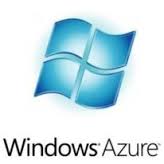Florence de Borja| Cloudtimes
Cloud computing has truly evolved from providing computing or storage resources to a more industry-specific community. Today, there are cloud instances to cater to each compliance and security requirements of a particular industry. Verizon has its cloud service which complies with the Health Insurance Portability and Accountability Act for the healthcare industry. Metal Lynx targets traders of precious metals. There are private clouds which are housed offsite and managed by a 3rdparty provider. With the myriads of cloud applications now available in the market, it makes sense to question if these cloud computing services do offer great cost savings.
Although it may seem difficult to evaluate the financial viability of each cloud service, there are cloud providers today who offer cloud costing and modeling tools in order to help the cloud customers ascertain the true cost of such services.
Some Cloud Computing Modeling And Costing Tools
For IT benchmarking of current cloud services, 6Fusion’s Cloud Resource Meter is able to measure demanding cloud computing resources necessary to operate a software which is x86-based. Introduced for VMware vSphere, the application is also able to measure resources running on Windows and Linux. Cloudyn, on the other hand, has a tool which computes the duration, type, and number of Reserved Instances an organization must buy to meet its needs. The tool is able to support Amazon Relational Database Service, Amazon Elastic Block Store, and Amazon Elastic Compute Cloud.
Cloudability supports HP Cloud, Google Apps, and Amazon Web Services. It is able to provide information for the organization by tracking various key performance indicators so that the company can determine if the cloud service is indeed cost efficient or not. Rightscale, on the other hand, supports SoftLayer, Rackspace, Microsoft Azure, Google Compute Engine, and Amazon Web Services. It is able to simulate a cloud computing deployment in order to analyze costs. It is also able to run various scenarios so that an organization can determine the 3-year costing and cost of elasticity.
Are Costing And Modeling Tools Helpful?
With the introduction of various costing models and tools, its return of investment computation is primarily hinged on one posit, that a company is able to save on software and hardware and that by paying only for resources that one needs, the cost will definitely go down. Although this presumption can be true, the computations on return of investment are, more often than not, drastically oversimplified. These computations often mislead business and IT departments about the true value of cloud computing.
The cloud’s real value is directly dependent on the particular dilemmas the cloud computing service is trying to solve, the central business processes, and the kind of business. The value of maximized scalability and agility must also be determined. Therefore, an organization which is trying to determine the financial impact of a cloud computing service on its business operations mustn’t rely on oversimplified ROI models because these tools won’t be able to provide an accurate valuation. In reality, for an organization to determine the financial benefits of cloud computing, it must delve deeper and truly understand what it needs and try to search for a cloud computing service which will meet its requirements.













